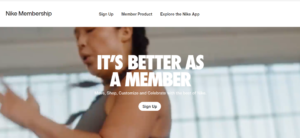When the pandemic hit, many businesses took a toll. This interview explored relevant strategies shared by marketing expert, Amelia Lim to rebuild an empire in the post-pandemic world.
Countries went into lockdown, people were told they couldn’t leave their homes, and shops were not allowed to run.
Businesses owners, marketers, and advertisers had to rethink the way they have been dealing with customers.
They had to make sure to get the products to customers despite the lockdown. They had to find a way to continue fulfilling customer’s needs. They had to innovate and think out of the box – and do things they haven’t done before.
Like it or not, things have changed since pandemic. So what’s the new norm for marketers and business owners? What’s the right way to approach customers?
How to market a product in a post-pandemic world without hard selling?
We turn to Amelia Lim, a marketing expert with almost two decades of experience, to answer these questions.
Hi Amelia! To start off, tell us a bit about yourself and your experience in marketing.
2020 marks 19 years in the field of marketing, communication and CRM work for me. I worked with 6 companies across different industries. Some of my key achievements include building sustainable social media followers organically.
I am especially interested in the hybrid work of traditional and digital marketing. My tenure with the British Council started me on this and provided me with the foundation of growing a reputable brand, not just in offering free services but also to convert them into quality leads.
Now, I freelance for a boutique agency called Alphaseed where customisation is key to the partners we work with.
As a marketing expert, how did you observe the changes in marketing by business owners before and after Covid?
A lot of the business owners weren’t receptive to the changes that were happening in marketing before Covid-19. They resisted the changes because they were afraid of the unknown and worried that the marketing cost of doing business was too high.

However, during the lockdown, many businesses were affected – some even went bust. In order to survive, they had to be open to explore new ways to attract customers. I’ve seen some businesses go out of their comfort zone in order to stay afloat during this time.
Having said that, there are still a lot of apprehensions in embracing the new norm in marketing. Some even went back to the old ways post the lockdown period.
In case a pandemic or any other unforeseen situation strikes – what immediate measures can business owners take?
You need to know your customer journey. It is not enough to know that customers come into your store and take that as the start of their journey.
In this digital age, there are many tools to help you track them. Once you set up your backend properly and with Google Analytics (this is really the basic) in place, you should be able to see where the traffic is coming from and from there, strategise on how you ought to tackle these traffic.
The most immediate measure is to address the pain points your customers are going through.
For example, set up e-wallets or QR code payments to minimise physical handling of the payments (in case of a pandemic).
Have an e-commerce website (or even an app) to reduce walk-ins to the stores. It’s not just about setting up the e-commerce website, but also to come up with promotion strategies to encourage potential customers to keep visiting and acting on that visit, which is to make a purchase.
Arrange with the building management to have kerbside pickup options or work with local delivery partners. There are many small time delivery partners that have sprung up during Covid-19, e.g. Mat Despatch, GoGet or PinkAid that would be willing to work alongside local businesses.
What’s the trick to avoid hard selling during tough times?
Offer solutions to your customers, not problems.
They will appreciate the little efforts done. You will never be able to satisfy all parties, but focus on the ones who matter.

Create an account on Facebook and/or Instagram, depending on your customer profile. The content that you put up has to make sense to your target audience. It’s not about the product and product alone.
Come out with personalised content that might be categorised as a PSA (public service announcement) with the product featured as a “by the way” rather than the focus.
For example, how to use leftover meat to come out with another wholesome meal the next day. This content offers alternative usage to the meat instead of throwing it away (wasteful); it also says a lot about the quality of the meat that is being sold in your store.
Many businesses are still adapting to the new normal and haven’t quite recovered. What advice do you have for them?
The old ways of working no longer apply now. Digital marketing, in one simple way or another, is the way forward.
Electronic direct mails (eDMs) sent to your customer database on offers, packages, promotions is one way.
Set up and manage your Facebook messenger as customers want their questions answered online rather than having to go to the stores – set up a simple set of questions with the bots answering would help to filter the flow.

If you don’t have the resources to set up a website, a Facebook page is the least that you can offer your customers. Constant content update is required to ensure that your page stays relevant.
Many of the regular customers would have had a pay cut or lost their jobs sometime during the pandemic.
If you have any form of loyalty program, you’d work out who the affected customers are and offer them bundle deals, special packages etc. A lot of customers will remember you as you have helped them during this time of trouble.
If you don’t have one, it’s not too late to start. You can rely on your store staff to identify who the regulars are and lend a helping hand. Start small.
Finally, what’s the key to putting customers first?
Know who your customers are – work out their profiles and improve from there.
The strategies need to be business-led rather than just from the marketing department itself. Why? You would face obstacles from other departments whose objectives aren’t aligned to yours, and this will set back all the efforts that marketing has put in place.
Use SMART when setting up goals. It stands for Specific, Measurable, Achievable, Realistic and Timely. These, once set up, will be easy to understand and measurable.
*
To learn more about Amelia, visit her page here.
To learn more about building a long-lasting relationship with customers, visit our blog.




